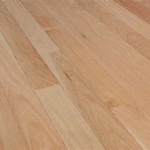Oak Floor Stain Colors: A Visual Guide
Oak flooring remains a highly desirable feature in residential and commercial spaces, prized for its durability, natural beauty, and versatility. One of the key decisions in installing or refinishing oak floors is selecting the appropriate stain color. The stain color profoundly impacts the overall aesthetic of a room, influencing the perceived warmth, sophistication, and style. This article provides a visual guide to oak floor stain colors, exploring various options and considerations for achieving the desired outcome.
Oak, in its natural state, possesses a light to medium-tone hue with prominent grain patterns. Red oak typically has pinkish undertones, while white oak leans towards a more neutral, beige color. Understanding these inherent characteristics is crucial when selecting a stain, as the existing color will influence the final result. A light stain on red oak will accentuate its pinkish tones, whereas a darker stain will minimize them. Similarly, the porosity of the wood affects stain absorption, leading to variations in color intensity. Careful consideration of these factors is paramount for achieving a consistent and predictable outcome.
Understanding Stain Types and Application
Before delving into specific color options, it is essential to understand the different types of wood stains available. Oil-based stains are a traditional choice, known for their rich color and penetration. They tend to highlight the natural grain patterns of oak and provide a durable finish. Water-based stains are a more modern option, offering lower VOC (volatile organic compound) emissions and faster drying times. Water-based stains are often preferred for lighter color options, as they tend to be less prone to darkening the wood over time. Gel stains are formulated to sit on the surface of the wood, rather than penetrating deeply. This makes them ideal for achieving consistent color on porous or uneven surfaces. Finally, stain and polyurethane combinations offer the convenience of staining and sealing the wood in a single step. However, they typically provide less color depth and durability compared to separate staining and sealing processes.
The application method also plays a crucial role in the final appearance of the stained floor. Proper preparation, including sanding the wood to a smooth surface, is essential for even stain absorption. Applying the stain in thin, even coats, following the direction of the wood grain, will prevent streaks and blotches. Excess stain should be wiped off promptly to avoid a muddy or uneven finish. Multiple coats can be applied to achieve a deeper, more saturated color. Finally, the choice of sealant, whether polyurethane, varnish, or wax, will also influence the final color and sheen of the floor. Experimenting with different stain types, application methods, and sealants is highly recommended to achieve the desired aesthetic.
Exploring Light and Neutral Stain Colors
Light and neutral stain colors are increasingly popular, offering a bright, airy, and modern aesthetic. These colors enhance the natural beauty of oak while creating a sense of spaciousness and light. White oak flooring, in particular, lends itself well to light stains, as its neutral undertones prevent the color from appearing too yellow or pink.
Natural/Clear Finish: A clear finish is not technically a stain, but it is worth mentioning as it allows the natural color of the oak to shine through. A clear finish will enhance the existing grain patterns and provide a protective layer without altering the color significantly. This option is ideal for those who appreciate the natural beauty of oak and want to create a minimalist aesthetic.
Whitewash: Whitewash stains provide a subtle, translucent white finish that allows the wood grain to remain visible. This creates a rustic, beachy, or Scandinavian-inspired look. The intensity of the whitewash can be adjusted by varying the number of coats applied. A whitewashed floor can brighten a room and create a sense of calm and serenity.
Gray Tones: Light gray stains are a sophisticated and contemporary option, offering a cool and calming effect. Gray stains work well with both red and white oak, but the undertones will vary depending on the wood species. A light gray stain can create a modern, minimalist, or industrial-chic aesthetic.
Beige/Natural Tones: Beige and natural-toned stains enhance the warmth of oak without overpowering the space. These colors are versatile and complement a wide range of décor styles. They create a welcoming and comfortable atmosphere, making them a popular choice for living rooms and bedrooms.
Light and neutral stains are particularly well-suited for smaller spaces, as they reflect light and make the room appear larger. They also provide a neutral backdrop for furniture and décor, allowing other elements in the room to stand out. These colors are easy to maintain and do not show dirt or scratches as readily as darker stains.
Exploring Medium Stain Colors
Medium stain colors offer a balance between light and dark, providing warmth and character without overwhelming the space. These colors are versatile and complement a wide range of architectural styles and décor preferences. Medium stains are a classic choice for oak flooring, offering a timeless appeal that transcends trends.
Golden Oak: Golden oak stains enhance the warm, honey-toned hues of oak, creating a welcoming and inviting atmosphere. This color is a classic choice for traditional and transitional homes. Golden oak stains pair well with warm-toned furniture and décor, creating a cohesive and harmonious look.
Honey Oak: Similar to golden oak, honey oak stains offer a slightly richer and more saturated color. They accentuate the natural grain patterns of oak and create a sense of depth and dimension. Honey oak stains are a popular choice for kitchens and dining rooms, creating a warm and inviting space for gathering.
Cherry: Cherry stains impart a reddish-brown hue to the oak flooring, adding warmth and sophistication. Cherry stains are often associated with traditional and formal settings. They pair well with rich colors, such as burgundy, navy, and gold, creating a luxurious and elegant atmosphere.
Walnut: Walnut stains offer a medium-brown color with warm undertones. They are a versatile choice that complements a wide range of décor styles. Walnut stains create a sense of warmth and sophistication, making them suitable for living rooms, bedrooms, and home offices.
Medium stain colors are a popular choice for homeowners seeking a balance between light and dark. They provide warmth and character while remaining versatile enough to complement a variety of décor styles. Medium stains are also a practical choice, as they do not show dirt or scratches as readily as lighter stains.
Exploring Dark Stain Colors
Dark stain colors create a dramatic and sophisticated look, adding depth and richness to oak flooring. These colors are often associated with luxury and elegance, creating a sense of grandeur and formality. Dark stains are best suited for larger spaces, as they can make smaller rooms feel cramped and enclosed.
Ebony: Ebony stains offer a rich, dark black color that creates a striking contrast with light-colored walls and furniture. Ebony stains are a bold and dramatic choice that can transform a room into a sophisticated and elegant space. They are often used in contemporary and modern homes to create a sense of drama and visual interest.
Dark Walnut: Dark walnut stains offer a deep, rich brown color with warm undertones. They are a classic choice for traditional and formal homes, creating a sense of luxury and sophistication. Dark walnut stains pair well with rich colors, such as burgundy, navy, and gold, creating a cohesive and elegant look.
Jacobean: Jacobean stains are a dark brown color with hints of gray and black. They create a rustic and antique look, adding character and charm to oak flooring. Jacobean stains are often used in traditional and farmhouse-style homes to create a sense of history and authenticity.
Espresso: Espresso stains offer a very dark brown color with warm undertones, similar to the color of espresso coffee. They create a sophisticated and elegant look, adding depth and richness to oak flooring. Espresso stains are often used in contemporary and modern homes to create a sense of luxury and sophistication.
Dark stain colors are a bold and dramatic choice that can transform a room into a sophisticated and elegant space. They are best suited for larger spaces and should be paired with light-colored walls and furniture to create a balanced and harmonious look. Dark stains require more maintenance than lighter stains, as they show dirt and scratches more readily.
Ultimately, the selection of an oak floor stain color is a highly personal decision that should be based on individual preferences, design goals, and the existing conditions of the space. Careful consideration of the oak's inherent characteristics, stain types, application methods, and the overall aesthetic of the room will contribute to a successful and visually appealing outcome.

What Color Should I Stain My Wood Floors

Floor Stains Wichita Wood Specialists

Choosing Hardwood Floor Stains

Light Stain On Red Oak Refinishing Floors

Best Stain For Red Oak Floors How To Choose Colors Flooring Hydrangea Treehouse

Stain Colors

Hardwood Floor Stain Colors How To Choose Daily Splendor

Weathered Oak Floor Reveal More Demo

Loba Wood Floor Stain Various Colors 1 Qt Neutral

What Color Should I Stain My Wood Floors








